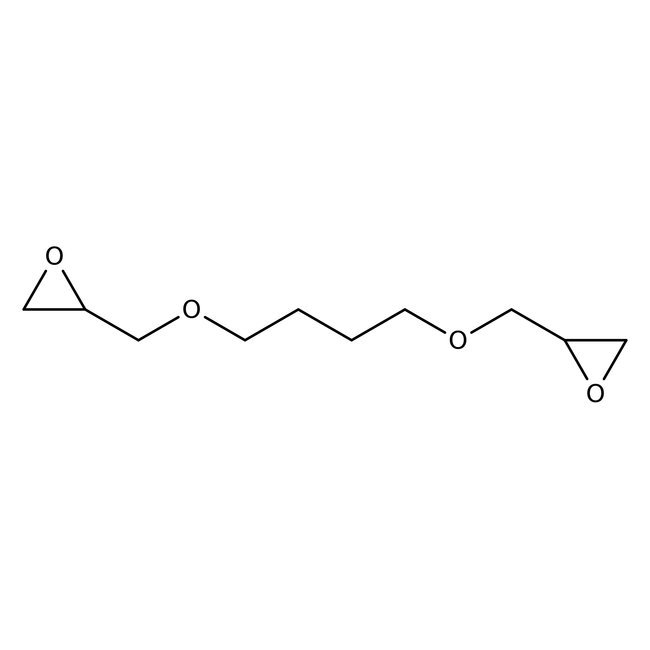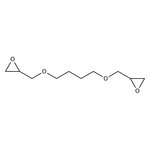Search Thermo Fisher Scientific
Thermo Scientific Chemicals
1,4-Butanediol diglycidyl ether, 96%
CAS: 2425-79-8 | C10H18O4 | 202.25 g/mol
Catalog number ALFL12632.18
View Price:Sign InSign in to see your account pricing. Need an account? Register with us today.
Quantity:
50 g
Specifications
Chemical Name or Material1,4-Butanediol diglycidyl ether
CAS2425-79-8
Health Hazard 1H302+H312+H332-H315-H317-H318
Health Hazard 2GHS H Statement
H312-H332-H315-H319-H317
Harmful in contact with skin.
Harmful if inhaled.
Causes skin irritation.
Causes serious eye irritation.
May cause an allergic skin reaction.
H312-H332-H315-H319-H317
Harmful in contact with skin.
Harmful if inhaled.
Causes skin irritation.
Causes serious eye irritation.
May cause an allergic skin reaction.
Health Hazard 3P261-P264b-P270-P271-P272-P280-P301+P312-P302+P352-P304+P340-P305+P351+P338-P310-P312-P330-P333+P313-P362-P501c
View more
1,4-Butanediol diglycidyl ether is used for preparing amylose, xylan and hydroxyethyl-cellulose, to cross link polyethylenimine which also serves as a hole-blocking layer in organic solar cells, to cross link hyaluronic acid into hydrogels and for the activation of soluble dextran polymers. It is the most commonly used homobifunctional epoxide compound
This Thermo Scientific Chemicals brand product was originally part of the Alfa Aesar product portfolio. Some documentation and label information may refer to the legacy brand. The original Alfa Aesar product / item code or SKU reference has not changed as a part of the brand transition to Thermo Scientific Chemicals.
Applications
1,4-Butanediol diglycidyl ether is used for preparing amylose, xylan and hydroxyethyl-cellulose, to cross link polyethylenimine which also serves as a hole-blocking layer in organic solar cells, to cross link hyaluronic acid into hydrogels and for the activation of soluble dextran polymers. It is the most commonly used homobifunctional epoxide compound
Solubility
Soluble in water (55,6 g/L at 20°C).
Notes
Store in cool place. Keep container tightly closed in a dry and well-ventilated place. Incompatible with strong oxidizing agents. Store at room temperature.
1,4-Butanediol diglycidyl ether is used for preparing amylose, xylan and hydroxyethyl-cellulose, to cross link polyethylenimine which also serves as a hole-blocking layer in organic solar cells, to cross link hyaluronic acid into hydrogels and for the activation of soluble dextran polymers. It is the most commonly used homobifunctional epoxide compound
Solubility
Soluble in water (55,6 g/L at 20°C).
Notes
Store in cool place. Keep container tightly closed in a dry and well-ventilated place. Incompatible with strong oxidizing agents. Store at room temperature.
RUO – Research Use Only
General References:
- Leonid N Ten.; Wan-Taek Im.; Myung-Kyum Kim.; Myung Suk Kang.; Sung-Taik Lee. Development of a plate technique for screening of polysaccharide-degrading microorganisms by using a mixture of insoluble chromogenic substrates. Journal of Microbiological Methods. 2004, 56 (3), 375-382.
- Lennart Kenne.; Suresh Gohil.; Eva M Nilsson.; Anders Karlsson.; David Ericsson.; Anne Helander Kenne.; Lars I Nord. Modification and cross-linking parameters in hyaluronic acid hydrogels--definitions and analytical methods. Carbohydrate polymers. 2013, 91 (1), 410-418.



